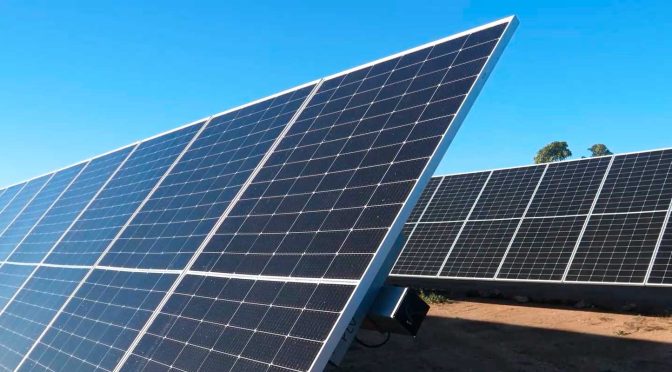Monthly production with renewables in Spain represented 58.7% and technologies that do not emit CO2 equivalent reached a share of 80.3%
National electricity demand experienced an increase of 0.9% in June compared to the same month of the previous year, once the effects of temperature and work hours were discounted. In gross terms, a demand of 19,525 GWh is estimated, 1.6% lower than that of June 2023.
In the first six months of 2024, Spain has registered a demand of 120,892 GWh, 0.7% more than in the same period of 2023.
This month, renewables generated 12,665 GWh, 29% more than in June 2023, and reached a share of the total of 58.7%, this being the second consecutive month in which solar photovoltaics leads the national mix, with 22.2% of the total. During this month, this technology produced 4,791 GWh, which is 23.8% more than June 2023.
It should be noted that on June 21, solar photovoltaic broke its daily production record with 201 GWh. which represented a share of 26.8% of the total.
According to the provisional data available today, wind power is the second technology with the highest electricity production in June, with 20.5% of the total; followed by nuclear (20.1%) and hydraulics (11.6%).
With this boost from renewables, 80.3% of the electricity produced in Spain during the month of June 2024 was free of CO2 equivalent emissions.
Peninsular demand increases 1%
At the peninsular level and once the effects of work and temperature are taken into account, demand has been 1% higher than in June 2023. In gross terms, demand this month has been 18,252 GWh, 1.6% lower than that of the same month of the previous year.
In the first half of the year, peninsular demand was 113,710 GWh, 0.6% higher than that registered in 2023.
The set of peninsular renewables generated 60.7% of the total in June, according to the provisional data available today, which shows a production of 12,424 GWh, 28.5% more than in the same month of the previous year. For their part, emission-free technologies contributed 83.6% of the total.

The peninsular generation structure in June is also led by photovoltaic solar, which has been responsible for 23% of the total by producing 4,703 GWh during this month, 23.7% more than in June 2023.
The electrical system in the Balearic Islands and Canary Islands
In the Balearic Islands, electricity demand in June was 0.2% lower than that of the same month in 2023, once the effects of work hours and temperatures are taken into account. Thus, gross demand is estimated at 535,998 MWh, 2% less than June of the previous year. From January to June 2024, the Balearic gross demand is estimated at 2,721,988 MWh, 0.4% more than in the same period of 2023.
In terms of generation, the combined cycle, with 57% of the energy produced in the Balearic Islands, was the islands’ first source this month. For its part, renewable energy without CO2 equivalent emissions generated in the Balearic community represented 18.2% of the total. Balearic renewable production grew by 33.9% in June compared to the same month of the previous year.
Furthermore, the submarine link between the Peninsula and Mallorca contributed during this month to covering 27.2% of the Balearic electricity demand.
For its part, in the Canary archipelago, the demand for electrical energy decreased by 0.4% compared to the same month in 2023, taking into account the effects of work and temperatures. In gross terms, demand was 704,176 MWh, 1.3% less. In the first six months of 2024, Canarian demand is estimated at 4,273,647 MWh, 2.4% more than in the same period of 2023.
Regarding electricity generation in the Canary Islands, the combined cycle, with 40.2% of the total, was also the first source in June. Renewables and emission-free technologies reached a share of 24.2% of production, with the wind contribution being 18.9%. Canarian renewable production in June has grown by 75.5% compared to the same month in 2023.


